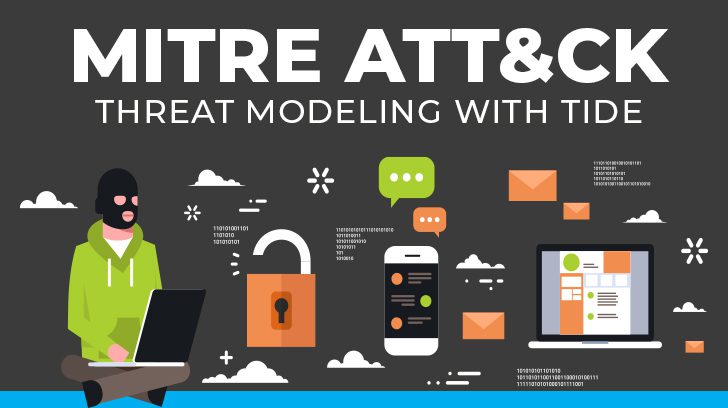In the ever-evolving cybersecurity landscape, organizations continuously seek more robust methods to protect their digital assets. Traditional red team engagements, while effective, often lack the strategic depth needed to simulate real-world adversarial behavior. Enter TIDE – Threat Intelligence Directed Engagements – an innovative approach pioneered by Linford & Company, which integrates Game Theory and threat intelligence frameworks like MITRE ATT&CK to structure more effective red team engagements.
Understanding Game Theory in Cybersecurity
Game Theory, a mathematical framework used to model strategic interactions between rational decision-makers, offers significant insights when applied to cybersecurity. In the context of red-teaming, Game Theory helps anticipate and simulate the tactics, techniques, and procedures (TTPs) of potential attackers. Organizations can better predict adversarial moves and develop more resilient defenses by viewing cybersecurity as a strategic exercise between defenders and attackers.
In the arena of Game Theory, whether you’re in the role of the attacker or defender, there are always three choice determinants that influence your strategic decisions.
- Your opportunities
- Your beliefs
- Your preferences
For a threat actor, their opportunities are the attack vectors they discover through reconnaissance. An attacker’s beliefs are the assumptions they make about your environment and are not always evidence-based, but often gained through experience attacking similar organizations. A threat actor’s preferences are based on their value judgments that motivate the attack. These can vary from attacker to attacker because the motivation varies. For example, the preferential attack vector of an attacker motivated by financial gain is often different from those whose motives are political or educational. Understanding your adversary is key to defending your infrastructure.
Leveraging MITRE ATT&CK for Threat Intelligence
The MITRE ATT&CK framework is a globally accessible knowledge base of adversary tactics and techniques based on real-world observations. It provides a comprehensive matrix of techniques across various stages of an attack lifecycle, enabling security teams to understand and anticipate potential threats.
When incorporated into red team exercises, MITRE ATT&CK is a valuable reference to ensure that simulated attacks mimic genuine adversarial behaviors. This alignment with real-world tactics enhances the relevance and effectiveness of red teaming, providing actionable insights for improving an organization’s security posture.

Game Theory & the MITRE ATT&CK Framework
TIDE (Threat Intelligence Directed Engagements) is an approach that combines the strategic foresight of Game Theory with the practical insights of MITRE ATT&CK to create a more dynamic and effective red team engagement. Here’s how TIDE enhances red team operations.
How Does Game Theory Support Strategic Planning?
Using Game Theory, red-teamers can model various attack scenarios and predict the potential responses of defenders. This strategic planning phase involves identifying attack vectors based on the organization’s assets and threat landscape. Red-teamers can design more sophisticated and realistic attack simulations by anticipating the defender’s countermeasures.
Why Does Threat Intelligence Matter in Red Team Engagements?
Incorporating MITRE ATT&CK into the red team engagement ensures the simulated attacks are grounded in real-world TTPs. Red-teamers can select specific techniques from the ATT&CK matrix that align with the predicted strategies from the Game Theory analysis. This integration ensures that red team exercises are theoretically sound and practically relevant.
How Does TIDE Enhance Dynamic Engagements?
With TIDE, red team exercises become a dynamic engagement rather than a static assessment. Red-teamers continuously adapt their strategies based on the defender’s actions, simulating an ongoing adversarial interaction. This dynamic nature mirrors real-world attack scenarios, where attackers frequently adjust their tactics in response to defensive measures.
What Additional Benefits Can I Expect from a TIDE Red Team Engagement?
The insights gained from TIDE-based red team engagements are invaluable for organizations. The final reports provide a detailed analysis of the attack scenarios, the effectiveness of defensive measures, and recommendations for improvement. Organizations can better prioritize their security investments and develop more robust incident response strategies by understanding the interplay between attackers and defenders.

The Strategy-Space Model
Part of the TIDE methodology for red team engagements is a working document called the “Strategy Space Model” (SSM). The SSM is similar to a threat model, with the exception that it models the strategy space for all players.
The defensive strategy space (DSS) includes all of the controls implemented by your organization as well as those of upstream providers, third-party integrations, and supply chains.
The offensive strategy space (OSS) includes the tactics, techniques, and procedures of your adversaries. In most cases, since the cybersecurity battlefield is asymmetric (there are more attackers than security resources in an organization), attackers are categorized by motive and assigned a weighted value based on the likelihood of their motivation to lead to an attack. For example, if your organization does not deal with financial data of any kind, the likelihood of a financially motivated attacker targeting your organization is low, compared to other motives like educationally-motivated, or revenge-motivated.
Conclusion
The TIDE approach represents a significant advancement in penetration testing methodologies. By leveraging Game Theory and the MITRE ATT&CK framework, organizations can simulate more realistic attack scenarios, anticipate adversarial behaviors, and develop stronger defenses. In an era of increasingly sophisticated cyber threats, TIDE offers a strategic, intelligence-driven methodology to enhance cybersecurity resilience.
As the cybersecurity landscape continues to evolve, embracing innovative approaches like TIDE will be crucial for organizations aiming to stay ahead of adversaries and protect their critical assets effectively.
Linford & Company pioneers the TIDE methodology for red team engagements. If you’re interested in learning how you can leverage TIDE in your cybersecurity initiatives, please contact us to schedule your no-cost consultation.

Chris started with Linford & Co., LLP in 2023 as the Director of Penetration Testing services. He started his IT Security and Penetration Testing career in 2001 after developing security programs within the U.S Federal Government and the private sector. Chris also holds two certifications from the National Security Agency – The InfoSec Assessment Methodology (IAM) and the InfoSec Evaluation Methodology (IEM), as well as GSEC and CISSP certifications. Chris also served as the liaison between the Denver Health and Hospital Authority and the federal Center for Medicare and Medicaid Innovation, where he was instrumental in assuring HIPAA and HITECH compliance for medical devices per state and federal regulations.




